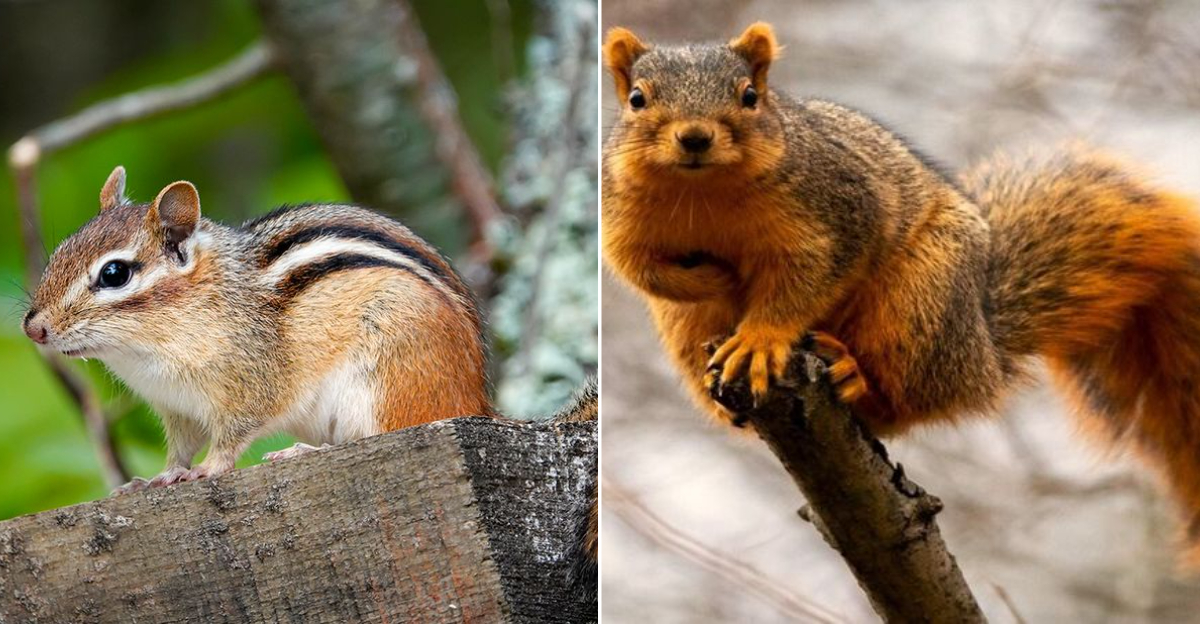Iowa’s outdoors are buzzing with more than just cornfields and wide-open skies—there’s a whole world of squirrels darting through the trees and scampering across yards.
These lively creatures come in a variety of shapes, sizes, and colors, each with its own unique personality.
Whether you’re a nature lover or just curious about your backyard visitors, get ready to meet 10 common squirrel species that make Iowa their lively home.
1. Eastern Gray Squirrel
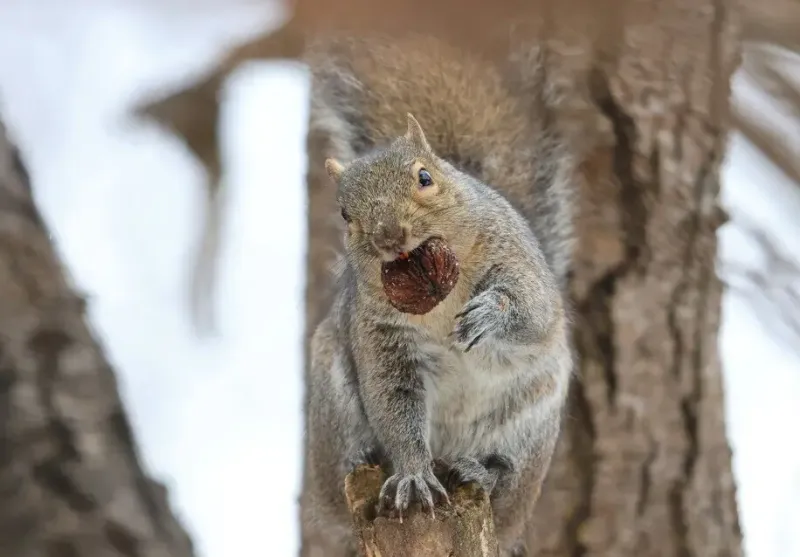
The neighborhood socialite of Iowa’s urban areas, sporting a silvery-gray coat that sometimes appears brownish depending on the season.
These chatty acrobats are larger than you might think, measuring 18-20 inches from nose to tail tip.
Masters of memory, they can recall thousands of nut-hiding spots and will pretend to bury food when they feel watched. Their bushy tails serve as everything from blankets to umbrellas!
2. Fox Squirrel
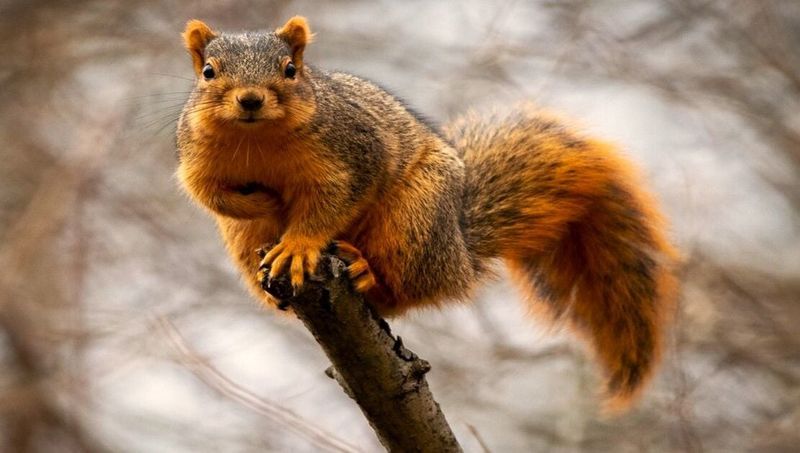
Rusty-orange bellies and impressive size make fox squirrels the heavyweight champions of Iowa’s tree squirrels.
Often mistaken for their gray cousins, these cinnamon-colored characters prefer open woodlands and are particularly fond of oak and hickory forests.
Surprisingly brave around humans, they’ve mastered the art of raiding bird feeders with acrobatic flair. A single fox squirrel can bury up to 10,000 nuts each autumn, effectively planting tomorrow’s forests!
3. American Red Squirrel
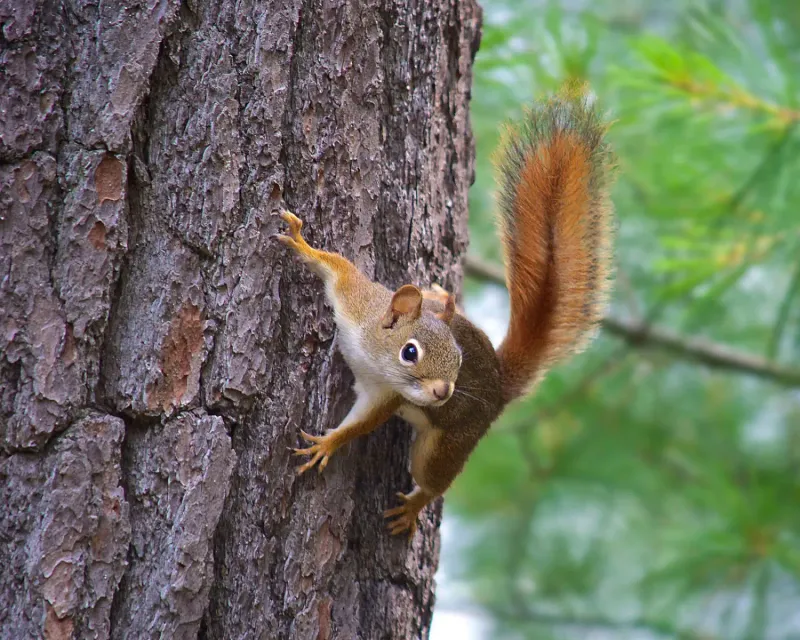
Fiery temperament packed into a pint-sized package! These territorial little spitfires announce their presence with machine-gun-like chattering that echoes through Iowa’s coniferous forests.
Smaller than their gray cousins, red squirrels sport distinctive ear tufts and vibrant rusty coats. They’re obsessive hoarders, creating massive middens (cone collections) that can last generations.
Winter doesn’t slow these bundles of energy – they remain active year-round, zipping through snow with remarkable enthusiasm.
4. Southern Flying Squirrel
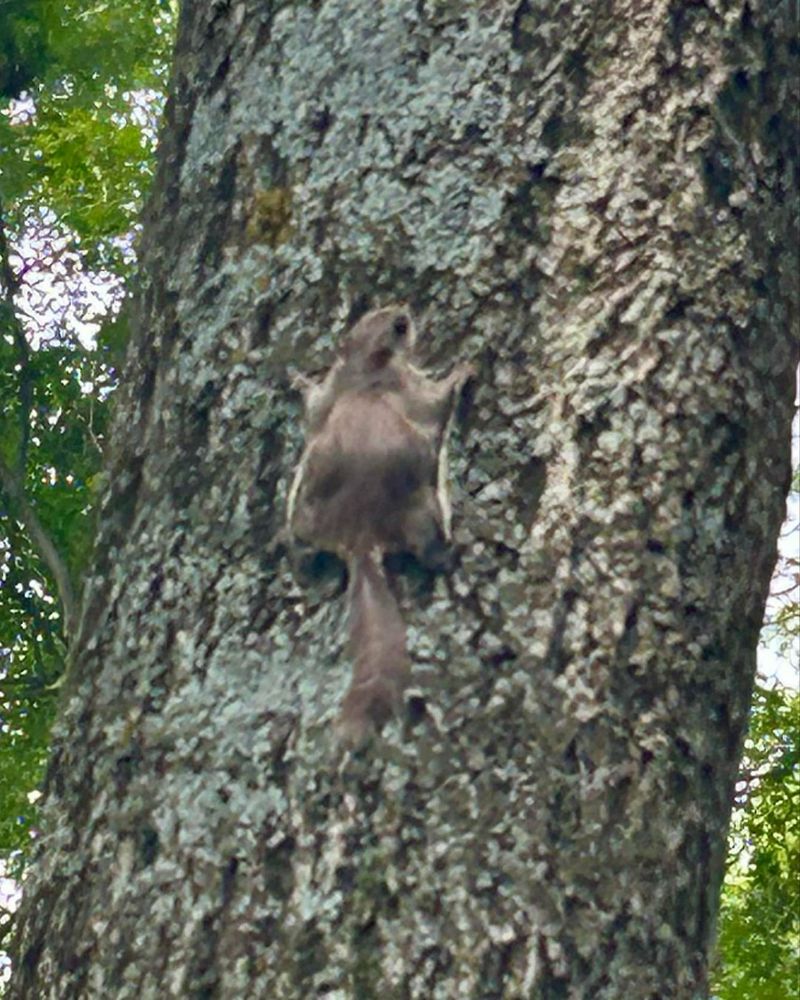
Moonlight daredevils that most Iowans never see! These nocturnal gliders sport adorable bulging eyes and a stretchy membrane between limbs that allows them to soar up to 150 feet between trees.
Smaller than your smartphone, they’re Iowa’s tiniest squirrel species. Despite their name, they don’t actually fly – they glide with remarkable precision, using their flattened tails as rudders.
Highly social, flying squirrels often nest in groups during winter months to share body heat.
5. Thirteen-Lined Ground Squirrel
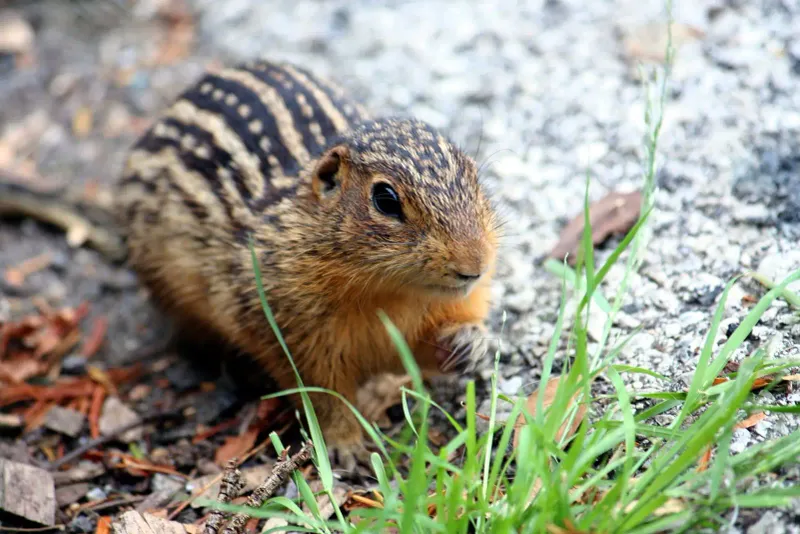
Prairie speedsters with racing stripes! These pint-sized ground-dwellers sport distinctive patterns of 13 alternating dark and light lines running down their backs, making them look like tiny football referees scampering across Iowa’s grasslands.
Exceptional diggers, they create elaborate underground bunkers with multiple entrances and escape tunnels.
Their cheek pouches can expand to three times the size of their heads for seed transport. During winter, they enter true hibernation, their body temperatures dropping to just above freezing!
6. Southern Red-Backed Vole
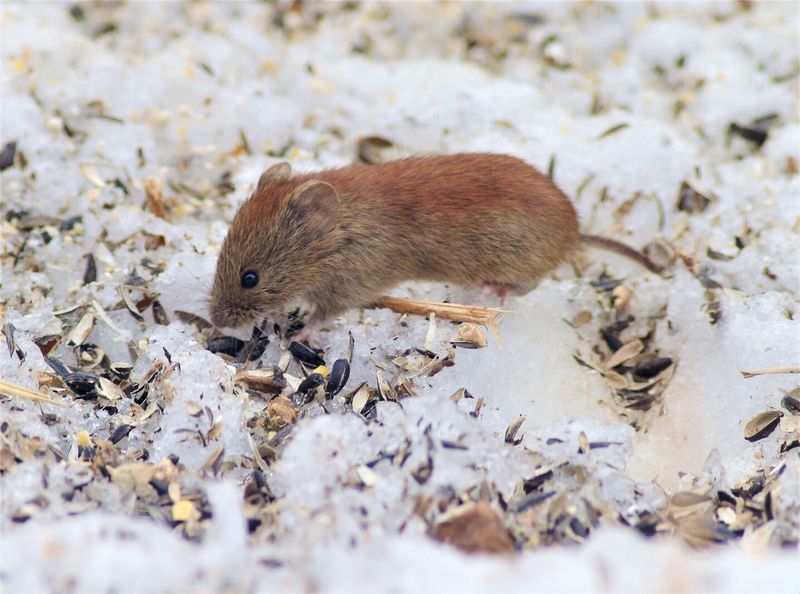
Plot twist! Despite often being mistaken for a squirrel by casual observers, this rusty-backed little critter isn’t a squirrel at all, but rather a member of the mouse family.
Found in Iowa’s northeastern woodlands, these secretive rodents sport a distinctive reddish stripe down their backs.
Masters of winter survival, they remain active beneath the snow, creating elaborate tunnel systems in the subnivean zone. Unlike true squirrels, they don’t hibernate or cache large food supplies.
Their primary diet consists of fungi, making them crucial forest helpers by spreading beneficial mycorrhizal spores!
7. Eastern Chipmunk
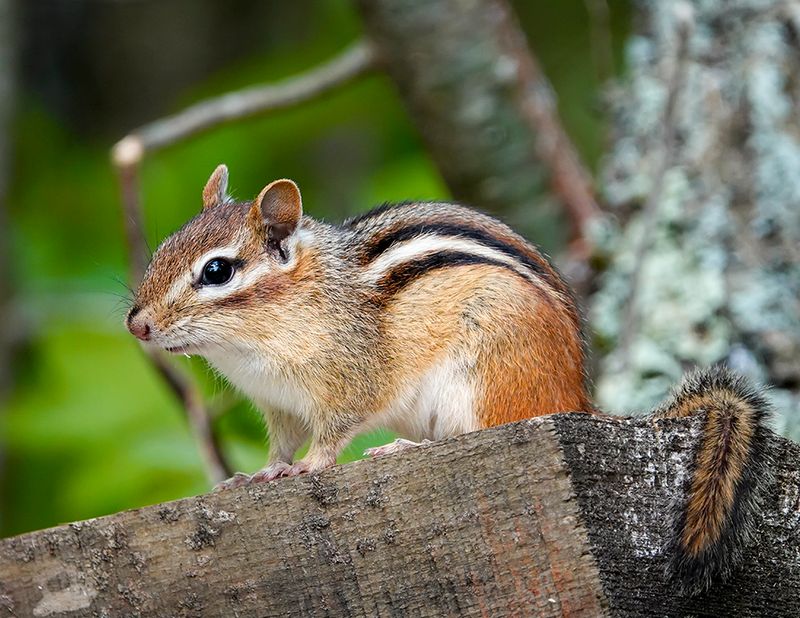
Pocket-sized powerhouses with endless energy! These striped foraging machines can stuff their expandable cheek pouches with seeds until they look like they’ve got a serious case of mumps.
Their distinctive five dark stripes running down their backs make identification a breeze. Nature’s gardeners extraordinaire, a single chipmunk can gather up to 165 acorns in a day.
Their underground homes feature multiple rooms including separate chambers for sleeping, food storage, and even bathroom facilities – talk about sophisticated!
8. Franklin’s Ground Squirrel
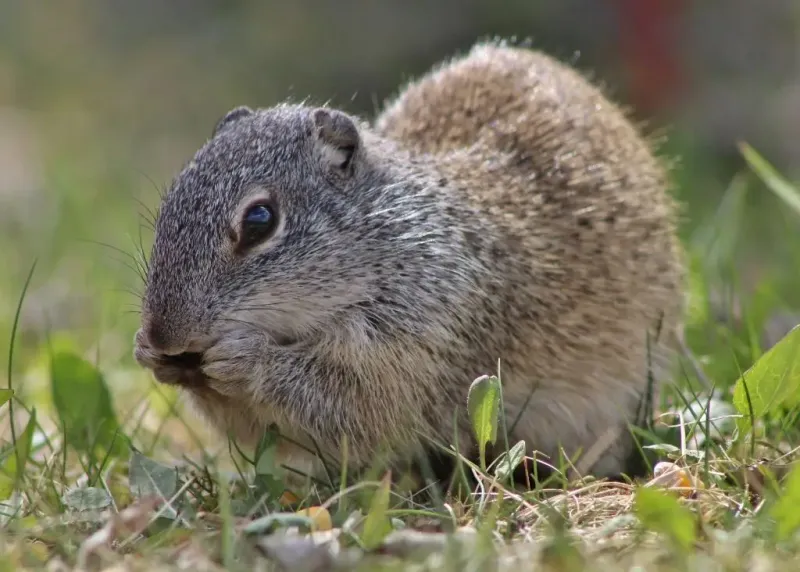
The mysterious phantom of Iowa’s tallgrass prairies! Often mistaken for gray squirrels, these elusive ground-dwellers sport speckled brownish-gray coats and prefer life among prairie grasses rather than in trees.
Rarely spotted despite being relatively common, they’re the secret agents of the squirrel world. Unlike their tree-dwelling cousins, they’re accomplished swimmers who don’t hesitate to plunge into water when threatened.
They spend nearly 90% of their lives underground in complex tunnel systems and hibernate for a whopping eight months each year!
9. Groundhog (Woodchuck)
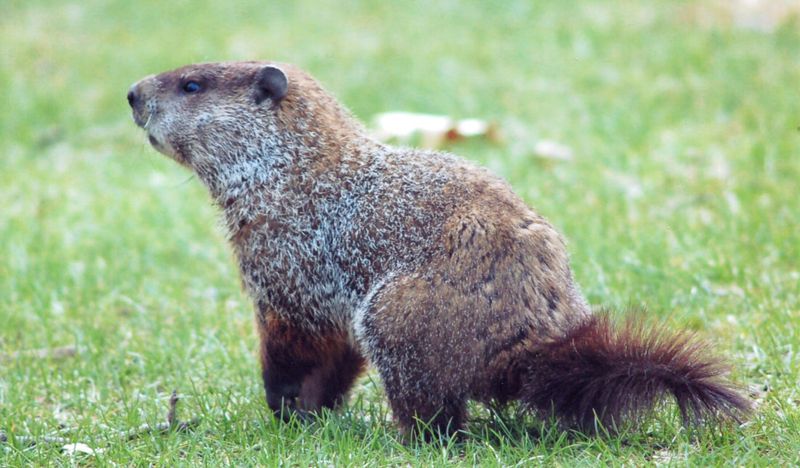
Weather-forecasting celebrities of the squirrel family! These chunky ground squirrels are actually Iowa’s largest squirrels, tipping the scales at up to 14 pounds.
Despite their roly-poly appearance, they can sprint surprisingly fast and even climb trees when motivated.
Master architects, they construct multi-level burrows with separate chambers for sleeping, nurseries, and bathroom facilities. A single groundhog can move over 700 pounds of soil creating its home!
10. Richardson’s Ground Squirrel
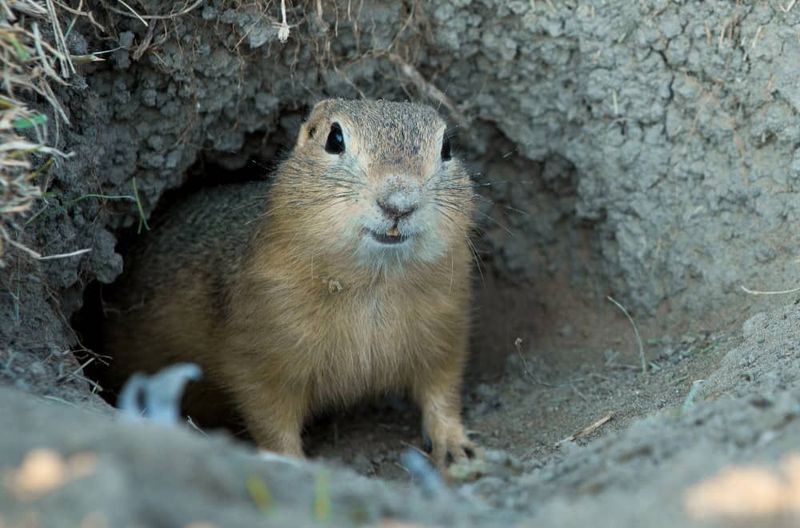
Prairie sentinels with a sophisticated warning system! These tawny-colored ground squirrels stand upright on their hind legs to survey their surroundings, resembling tiny meerkats on Iowa’s northern grasslands.
Communication experts, they use different alarm calls to warn colony members about specific threats – one call for aerial predators, another for ground threats.
Their underground cities can house dozens of individuals with interconnected tunnels spanning over 30 feet across!
